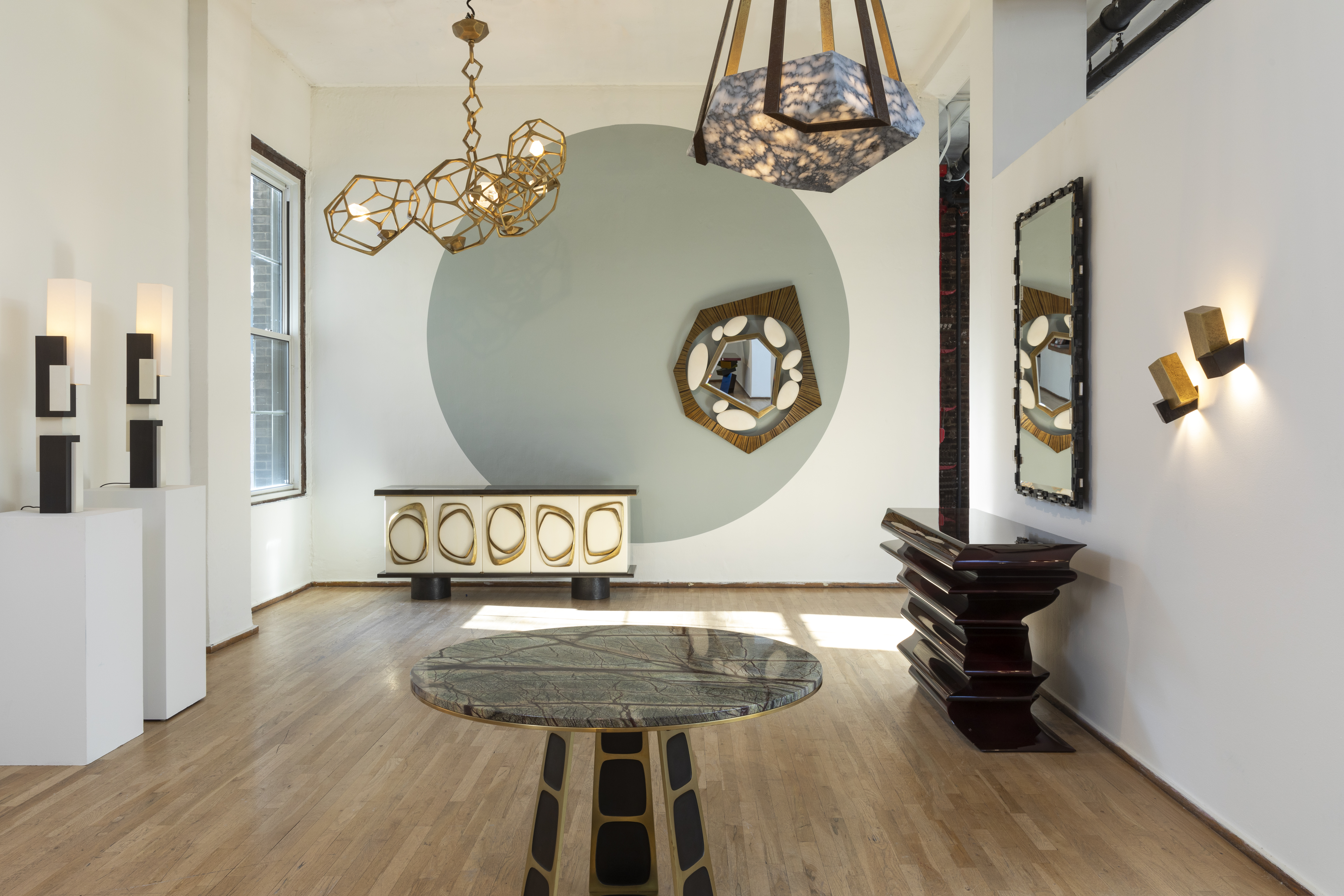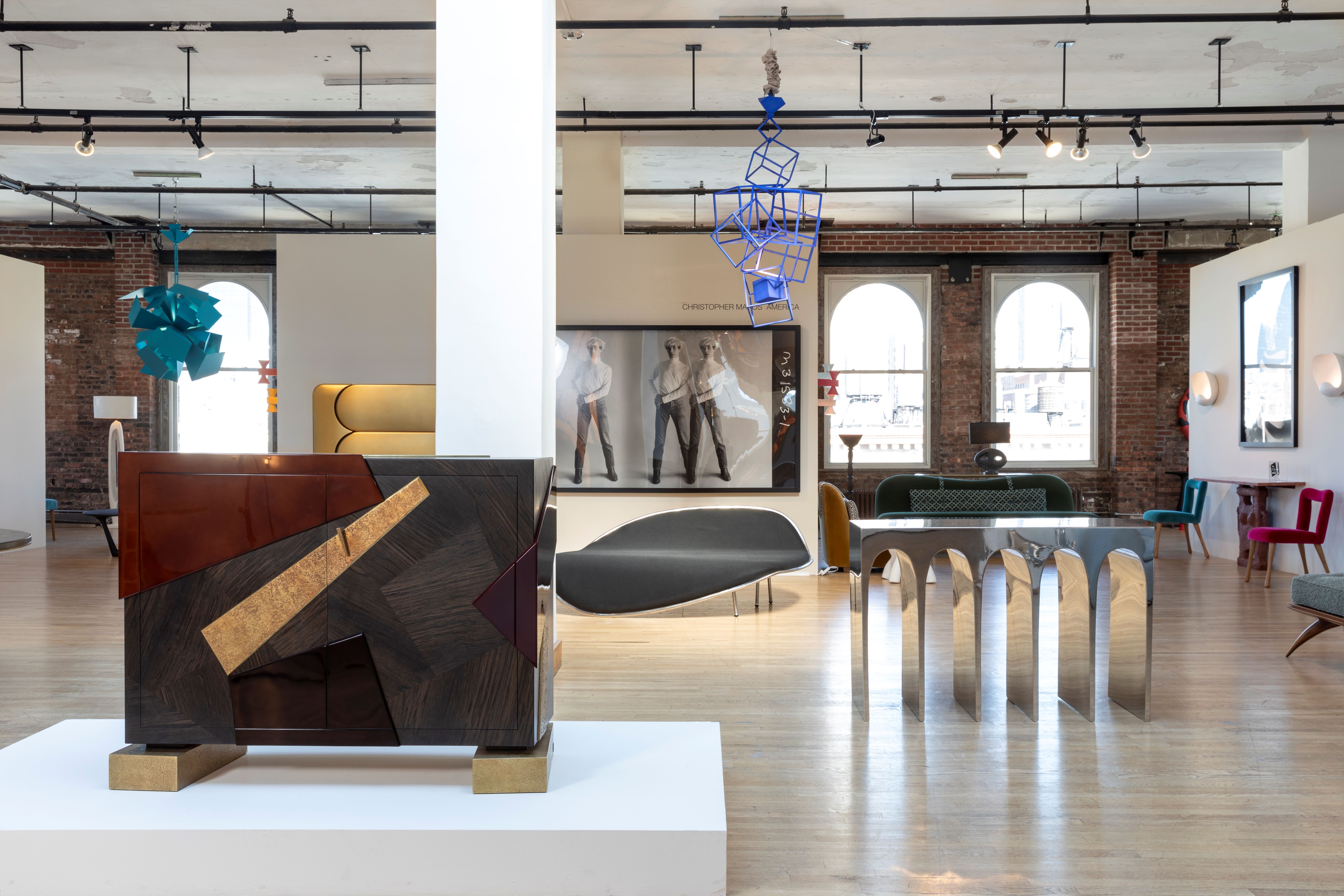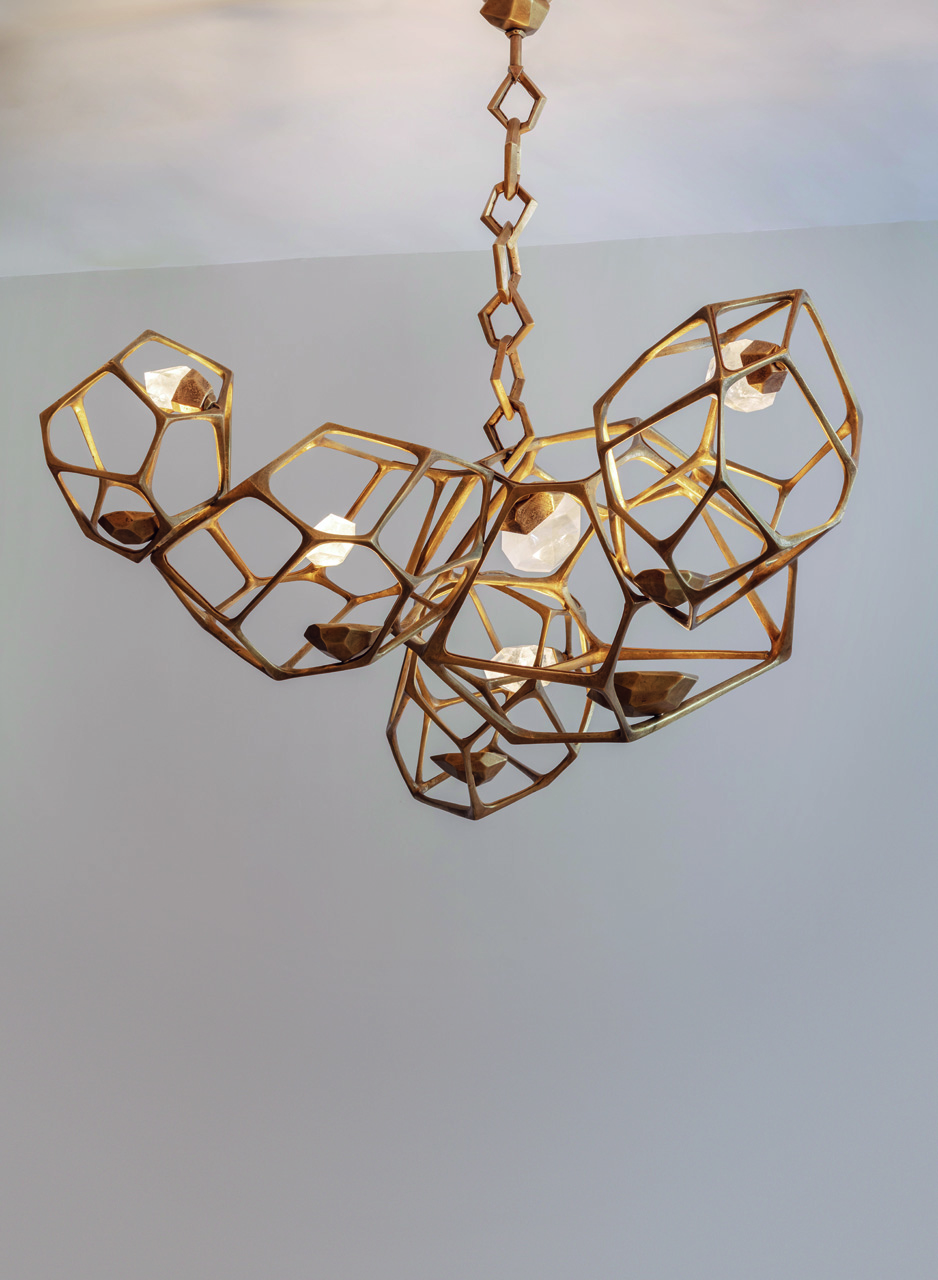
In times of flux and friction, there’s comfort to be found in celebrating endurance. Such was our feeling on learning that Ralph Pucci, the esteemed New York mannequin designer-and-fabricator-turned-gallerist, would be hosting a large show for Parisian artist-designer Hervé Van der Straeten, to celebrate 20 years of their collaboration. In the somewhat fickle frippery of the contemporary design landscape, this is a partnership of heavyweights, which we wholeheartedly applaud.
Van der Straeten pitched up on Pucci’s doorstep two decades ago in the hope of capturing the New Yorker’s eye with his work. The young Parisian was not long into furniture design himself, having moved from jewellery into the burgeoning field of collectible design. Serendipity played its part. Pucci happened to be emerging from an elevator when he met Van der Straeten, who persuaded him to look at his portfolio. Eyes and heart alighted on the work. A first show was quickly pulled together, which sold out in a week (despite Pucci’s formidable mother warning it wouldn’t sell). As they say, the rest was history.
Fast-forward two decades and Van der Straeten’s work today fills Pucci’s showroom with his signature flair and passion for pushing the boundaries of craftsmanship. Here we see chandeliers, consoles, sideboards, mirrors and dining tables variously brought to life in lacquered wood, bronze and stone. The playful heft of form is underpinned by a poetic levity of finish that takes Van der Straeten’s work from the bloated realm of collectible design into somewhere more intriguing. These are works that captivate and mesmerise; they are evocative and enigmatic, each one striking in its beauty.
On the occasion of the show’s opening, we caught up with Ralph Pucci to learn more about his journey from mannequins to fine furniture, his relationship with Hervé and the impressive family firm he has helmed between generations, up and down.

In conversation with Ralph Pucci
Wallpaper*: Before we get to the show, I’m interested to hear what happened to your wonderful mannequins?
Ralph Pucci: In short, we decided to focus on the furniture. Since we’ve last spoken, the whole world has changed dramatically. I sensed for some time that things were shifting in retail. When I first started, retail was a creative industry. People would notice who had the best mannequins, the best windows and the best presentation. Buyers would rush to Pucci to be the first to get our mannequins. Then it changed to be about who could do things for the least amount of money. It’s okay to have one person on the team to keep finances under control, but when the whole organisation becomes about numbers, then it gets scary. All the creativity is taken away from it. So we kept the same people with us, who are all sculptors. And our mannequin business transitioned into furniture.

W*: That’s a bold and impressive shift.
RP: We keep moving forward. You have to. It’s been so heartening and exciting to keep our key members on board; some have been with us for 40 years. I always felt my mannequins were sculptures. They were meant for clothes, but when they were in clay they were definitely sculptures. So in many ways it was an easy transition.
W*: I’m intrigued by the practicalities involved in this shift?
RP: Our team is made up of creative people and they love the challenge. We have all the facilities for various forms of craft and manufacture here, so it’s easy when you have everything under one roof: materials, fabrication, pricing, logistics, delivery. We can collaborate with designers and move quickly. From a business point of view, we can be fast and effective.

W*: I see that your showroom looks quite different from when I last visited.
RP: Without the mannequin factory, we have changed things quite a bit. We left the industrial fans for the booths where we’d spray the mannequins, and we have painted things white. In the middle of the gallery we have a glass garage door with a view into the studio where you can see the team working. Clients see hand-sculpted work and they understand what goes into the pieces they see in the showroom. We never really showed our mannequin workshop previously - it was never part of the tour. Nowadays, when you come to Pucci you see behind the scenes. We made the making core to our world and we embrace it. People want to see where things come from and how things are made. Times change.

W*: We are here to celebrate your long-standing relationship with Hervé. When and how did this begin?
RP: I remember very well. Around 20 years ago I was leaving my office to go to the workshop floor. Hervé was coming out of the elevator. He had just showed up and had asked for me. I didn’t know him or his work at the time. He asked if I would sit down with him so he could show me his work. That’s a New York story in itself. What would have happened if I hadn’t been there? I’ll never forget it. He had his tabouret stools in Chinese red, apple green, plum, white and I said: ‘These are incredible! I’d like to pair them with a console and a chandelier,’ and he flipped the page and said ‘Like this?’ He showed me what he had done in his Paris gallery, which was exactly what I’d been imagining. I said: ‘When can we do a show?’ It was that simple; that quick. Seven months later we had our first show and it was a hit. Everything sold within a week. Things were very different then.
W*: How do you describe the difference?
RP: 20 years ago design was very minimal, quiet, chic. Hervé in his own quiet and elegant way turned this upside down with noble materials, little by little, elegantly and gently. He’s a very driven guy. Very focused. He just kept coming out with more and more work. Now he has a collection of hundreds of pieces. I really believe Hervé is the godfather of the modern collectible design movement.

W*: What do you love about Hervé’s work?
RP: The thing that really impresses me about Hervé is that the work - creative as it is - is always timeless rather than trendy. Even when he tries to have fun and stretches it there’s still a profound and effortless chicness to his collections. There’s always elegance within his exploration. Everything is beautifully made.
W*: It strikes me that you’ve both arrived at where you are and what you do after a bit of a journey, too.
RP: You’re right. Hervé started out as a jeweller, I started out as a mannequin designer. We share a love for visual impact and the influence of fashion with a sculptural approach. Hervé has an unbelievable workshop, as do I. There are so many similarities. We came to our practices in different ways of course, but a lot of the roots were the same. I can’t tell you how impressed I am by how far he’s come in 20 years.
W*: We love celebrating relationships that evolve and endure.
RP: It has been a meeting of minds and a very fulfilling partnership. We presented Hervé with a platform here, together with an experienced team and a respected brand. We opened the door together. At the start, all the top designers would put one piece of Hervé’s into their projects. Then when time went on, one piece became two and now three. What I admire about Hervé is that he did not sit back on his success, he kept going. You have to constantly excite people.
W*: Tell me how you feel about the design landscape today.
RP: The market for one-of-a-kind, statement design is huge. I do question if collectible design is becoming too avant garde. What’s special about Hervé is that his work can be comfortable in a very classical interior, or in a more avant garde environment. Personally, I think his work is more powerful in a classic environment, where it feels unexpected in contrast with more antique pieces.

W*: Back to Ralph Pucci - it’s heartwarming to see the next generation are in attendance too.
RP: Isn’t it just? You don’t tend to think about family legacy when you’re younger, it all feels a bit remote and grand and you think it’ll never happen. But then my son Michael came in and he just took to the industry. He provides the perfect blend and gets along very well with all the designers. My daughter Nicole came from education and she now works in operations. She started the Jazz House Kids, which is an organisation that helps children from minority backgrounds find their way through music. We have had musicians including Sting and Diana Krall perform. It was an incredible experience with 200-people here watching Sting with just a piano. My daughter arranges for public schools to come to Pucci to see the studio and she hosts artist seminars. I’m so proud of her. These are things I wouldn’t have done or had time to do if it wasn’t a family business. It’s so important that children have an opportunity to find their way through music and art.

W*: What a wonderful program at a time when it’s harder than ever for young people to find access or entry in the creative industries.
RP: It’s an optimistic story, which in New York since the pandemic is definitely not the case for everyone. I find it frustrating how closed things are. When I started my career, I had all the top creative people at my fingertips. Now New York is so expensive, the creative talent isn’t here like it used to be. We’re losing the raw energy that made New York so special. Someone asked recently: ‘How did you find all the young people who turned out to become such stars?’ I said; ‘They came to my openings and then they came the next morning and we’d talk about what we could do together.’ We need to keep our doors open to young talent to ensure we are still providing opportunities for creative people to live and work in New York. They are our future.
RALPH PUCCI Celebrates 20 years with Hervé Van der Straeten, opening on 29 October 2024
RALPH PUCCI (new york) 4
4 W. 18th St. New York,
NY 10011
ralphpucci.com
vanderstraeten.fr








